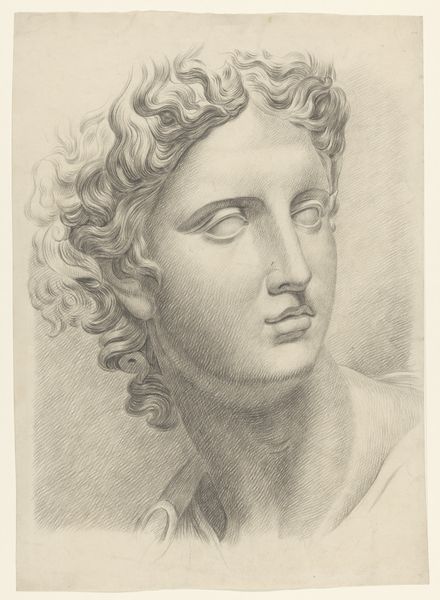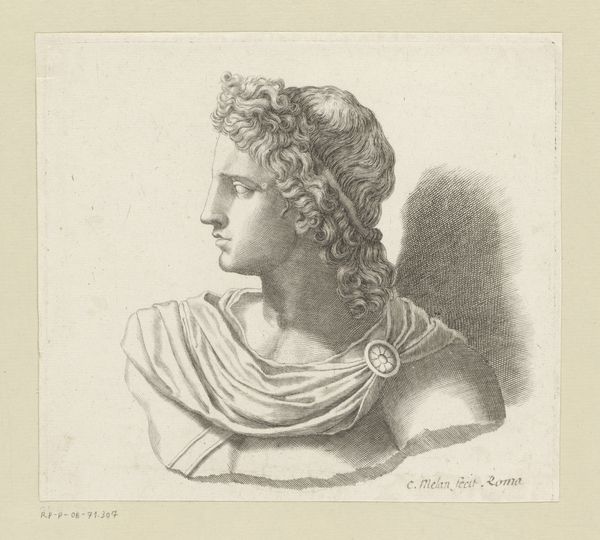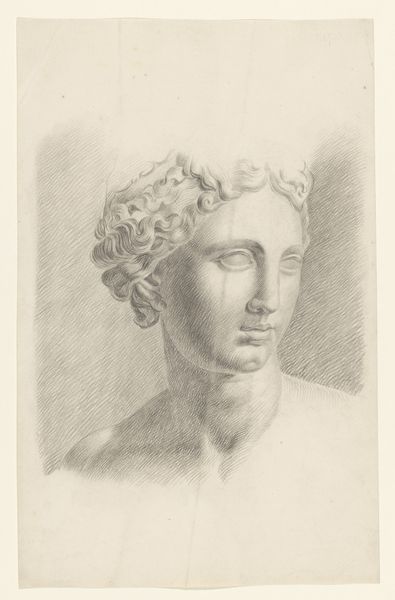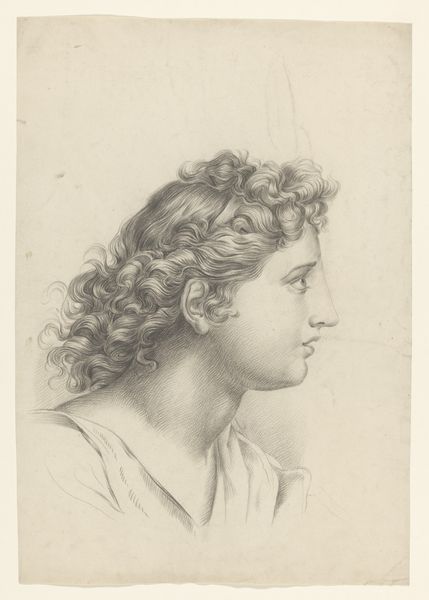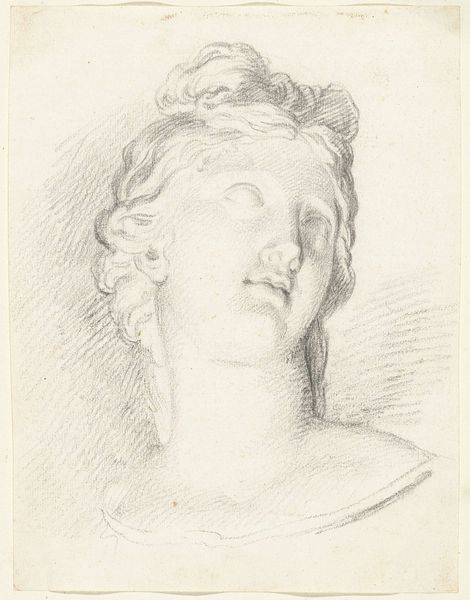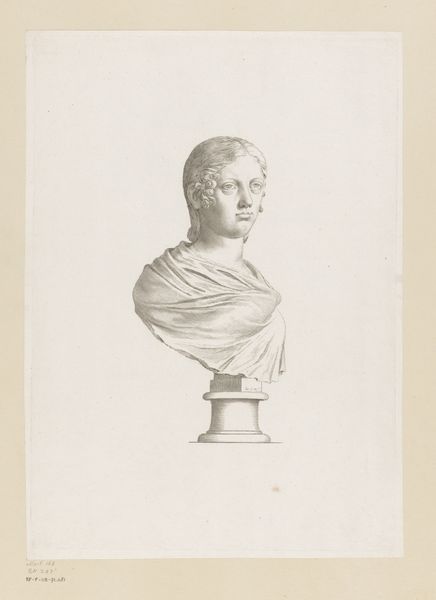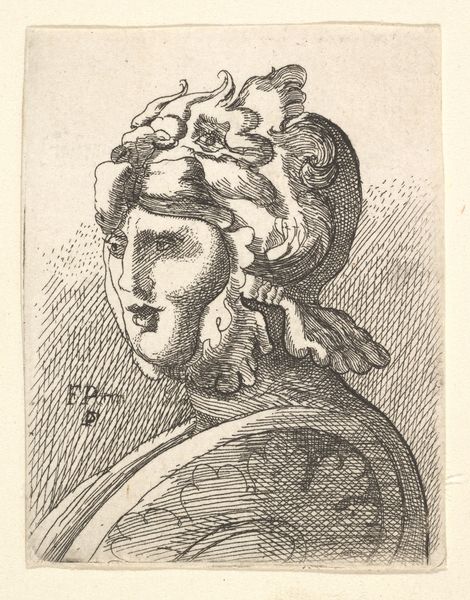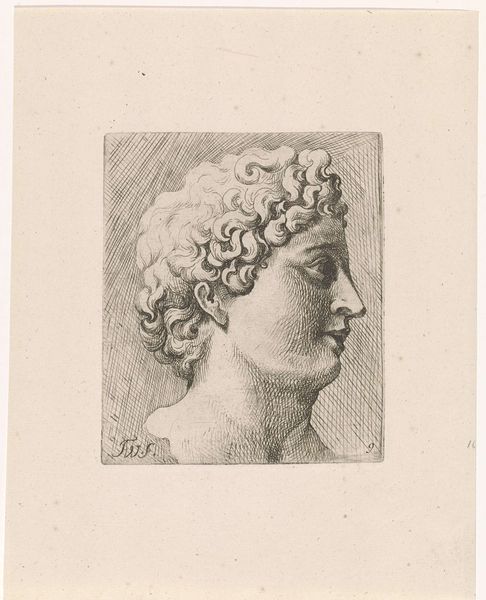
drawing, pencil
#
portrait
#
pencil drawn
#
drawing
#
caricature
#
classical-realism
#
figuration
#
pencil drawing
#
pencil
#
portrait drawing
#
academic-art
Dimensions: height 482 mm, width 380 mm
Copyright: Rijks Museum: Open Domain
Editor: Here we have Johannes Tavenraat’s "Head of a Bacchante, Facing Right," likely created sometime between 1819 and 1881. It's a pencil drawing, and what strikes me immediately is its incredible delicacy. It feels almost… fragile. What do you see in this work, especially given its subject matter? Curator: It's interesting you mention fragility. Consider the historical context: the Bacchantes, followers of Bacchus, the god of wine and ecstasy, were associated with frenzied, ecstatic rituals, almost the opposite of that fragility. Tavenraat is choosing to depict this figure in a very controlled, academic style. Why do you think he made that decision? Editor: Perhaps to align the image with more acceptable social norms of the time? Tempering potentially scandalous imagery? Curator: Exactly! This highlights how artistic expression is shaped by prevailing societal and institutional frameworks. Museums and academies of art often functioned as gatekeepers, influencing the acceptable representations of even seemingly wild subjects like the Bacchantes. It's a way of containing the potentially subversive elements. How does this shift in portrayal affect the viewer’s perception of Bacchantes and the mythology surrounding them? Editor: It almost sanitizes them, making them more palatable and less… threatening? By depoliticizing, he controls the narrative of classical subject matter and how it reflects his world. Curator: Precisely. And consider, the Rijksmuseum itself, the institution that houses this work, plays a role in constructing and maintaining cultural narratives through what it chooses to display and how it presents it. Editor: That makes me see it in a whole new light! It's not just a drawing of a mythological figure; it's a product of specific historical and social forces. Thanks. Curator: Indeed. Examining art through that lens gives us a richer understanding of its place and function in society.
Comments
No comments
Be the first to comment and join the conversation on the ultimate creative platform.

